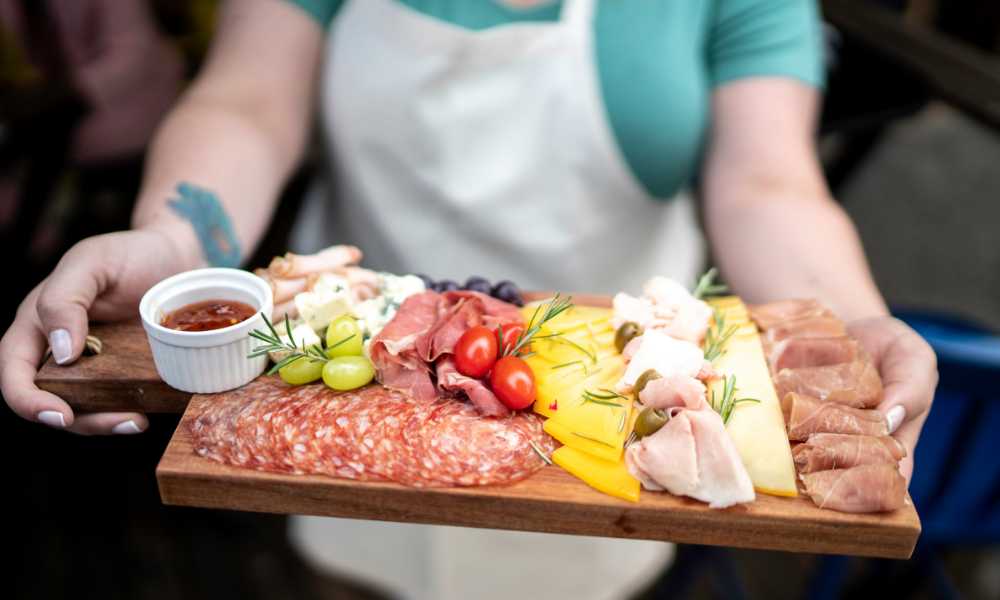Storing your cutting board correctly isn’t just about saving space—it’s crucial for maintaining its condition and ensuring hygiene. Whether you’re a culinary enthusiast or a home cook, the way you store your cutting board can significantly impact its lifespan and safety. In this guide, we’ll explore various effective methods for storing different types of cutting boards, from wooden to plastic, ensuring they remain dry, mold-free, and ready for your next cooking adventure. Learn the best practices for vertical and horizontal storage, tips on maintaining optimal air circulation, and creative solutions to fit any kitchen space. Start protecting your investment today with our comprehensive tips on how to store a cutting board.
Types of Cutting Boards

Choosing the right storage method for your cutting board depends heavily on the material it’s made from. Wood, plastic, and bamboo each have unique requirements to prevent damage and extend their usability. Wooden boards need dry conditions to prevent warping, while plastic ones are more resilient but can retain odors if not stored properly. Bamboo, an eco-friendly option, demands good air circulation to avoid moisture buildup that could lead to splitting. Understanding these material-specific needs will help you select the ideal storage solution, ensuring your cutting board remains in prime condition for your culinary tasks.
Cleaning Before Storing
Proper cleaning is essential before storing your store a cutting board to prevent bacterial growth and contamination. Start by scrubbing the board with hot, soapy water. For wooden boards, avoid soaking as it can cause warping; instead, use a mild solution of vinegar and water for a deep clean that doesn’t damage the wood. Plastic boards can handle stronger disinfectants like bleach diluted in water to ensure all bacteria are eradicated. Always rinse thoroughly and dry upright to allow air circulation. By following these simple steps tailored to the material of your cutting board, you ensure it remains hygienic and durable, ready for your next culinary task.
Drying Techniques

Properly drying your cutting board is essential before storing it to prevent bacteria growth and mold. Air-drying is the most effective method, allowing the board to dry evenly on all sides. Simply stand the board upright in a well-ventilated area until completely dry. Alternatively, towel-drying can be used for quicker results, especially if you’re pressed for time. Use a clean, dry towel to pat down both sides of the board thoroughly. However, ensure it’s fully dry before putting it away to avoid any moisture-related issues. Whether you choose air or towel drying, the key is to ensure no dampness remains that could compromise the board’s integrity and cleanliness.
Vertical vs. Horizontal Storage
Choosing between vertical and horizontal storage for your cutting boards can greatly affect their durability and shape. Vertical storage, ideal for saving space, minimizes contact between boards, reducing the risk of scratches and warping. However, ensure boards are securely placed to avoid tipping over. Horizontal storage, on the other hand, offers stability and easy access, but stacking boards without sufficient space can trap moisture, leading to bacterial growth and potential warping. To optimize either method, use breathable racks that maintain air circulation and keep the boards dry and flat. Proper storage practices will preserve your cutting boards, keeping them in prime condition for daily use.
Using Racks and Stands
Choosing the right rack or stand is essential for effective cutting board storage. Opt for racks that allow vertical positioning to minimize space usage and prevent warping. Stands designed with slots promote better air circulation, keeping your boards dry and hygienic. When selecting a storage solution, consider the size and number of your cutting boards and the available kitchen space. Adjustable racks are ideal as they can accommodate boards of various thicknesses and lengths. Ensure the material of the rack or stand is sturdy and moisture-resistant to enhance durability and maintain cleanliness. This approach not only organizes your kitchen but also extends the life of your barbed boards.
DIY Storage Solutions
Embracing DIY storage solutions for your cutting boards can transform even the tightest kitchen space into a model of efficiency. Crafting a homemade stand or holder allows you to tailor the storage to your specific needs and available area. Start by selecting a simple design that accommodates your largest board, ensuring stability and easy access. Utilize materials like reclaimed wood or metal brackets for a rustic or modern touch, respectively. Follow clear, step-by-step instructions to create a functional and stylish storage solution that not only saves space but also adds a personal touch to your kitchen decor. These bespoke solutions help keep your cutting boards neatly organized and within easy reach.
Maintaining Air Circulation
Maintaining proper air circulation is essential to prevent mold and bacteria from thriving on your cutting boards. Without adequate airflow, moisture can linger, creating an ideal environment for harmful microorganisms. To ensure your cutting boards stay dry and sanitary, avoid stacking them tightly together or placing them in enclosed spaces where air cannot circulate freely. Consider using a vertical storage rack or stand that spaces out each board, allowing air to move around them. Additionally, regularly check the storage area to confirm it remains well-ventilated, a simple yet effective strategy to extend the life and safety of your cutting boards.
Temperature and Humidity Considerations

Environmental factors such as temperature and humidity play a pivotal role in the storage of cutting boards. Excessive moisture can lead to warping and bacteria buildup, especially in wooden boards, while too dry conditions might cause them to crack. Ideally, store your cutting boards in a cool, dry place away from direct sunlight and heat sources, which can exacerbate these issues. For plastic and composite boards, consistent moderate conditions help maintain their integrity without the risk of warping. By understanding and managing these environmental elements, you can ensure that your cutting boards remain in prime condition, ready for your next culinary task.
Safe Storage Tips
Storing cutting boards securely is crucial to prevent accidents and damage in your kitchen. Ensure that your storage solution, whether it’s a rack, stand, or cabinet, can handle the weight and size of your cutting board without tipping. Opt for non-slip mats or rubber grips to keep boards from sliding off surfaces. It’s essential to place heavier boards on lower shelves or in bottom cabinets to reduce the risk of them falling. By following these simple yet effective storage strategies, you can create a safer kitchen environment and extend the life of your cutting boards.
Organizing Multiple Cutting Boards

Efficiently organizing multiple store a cutting board keeps your kitchen orderly and ready for any culinary task. A key strategy is categorizing boards by use—one for meats, another for vegetables, to prevent cross-contamination. For smaller kitchens, consider hanging boards on the wall or behind cabinet doors to save counter space. In larger kitchens, dedicate a drawer or shelf specifically for board storage, using dividers to keep them upright and separated. These solutions not only enhance accessibility but also protect your boards from damage and bacteria buildup, ensuring a cleaner cooking environment and extending the lifespan of your essential kitchen tools.
Regular Maintenance
Regular maintenance is key to extending the life of your cutting board. Periodic inspections will help you identify when it’s time to oil your Slab to preserve its smooth surface and prevent cracking. Use food-grade mineral oil for best results, applying a thin coat that absorbs completely before the next use. Additionally, recognizing when to retire a barbed board is crucial. If deep cuts, grooves, or cracks become visible, it’s time to replace it to avoid food contamination risks. By staying proactive with these maintenance practices, you can ensure your cutting board remains a safe and functional tool in your kitchen.
Conclusion
Proper storage of your cutting board is more than a simple kitchen organization hack; it’s an essential practice that protects both the functionality and hygiene of this indispensable tool. By choosing the right storage method, whether vertical or horizontal, and ensuring good air circulation, you can prevent warping and contamination. Remember, a well-maintained cutting board not only extends its life but also enhances your cooking experience by providing a stable, clean surface for food preparation. Embrace these tips on how to store a cutting board, and enjoy a clutter-free, efficient, and hygienic kitchen environment. Ready to transform your culinary workspace? Start with the basics and store your cutting boards wisely.

